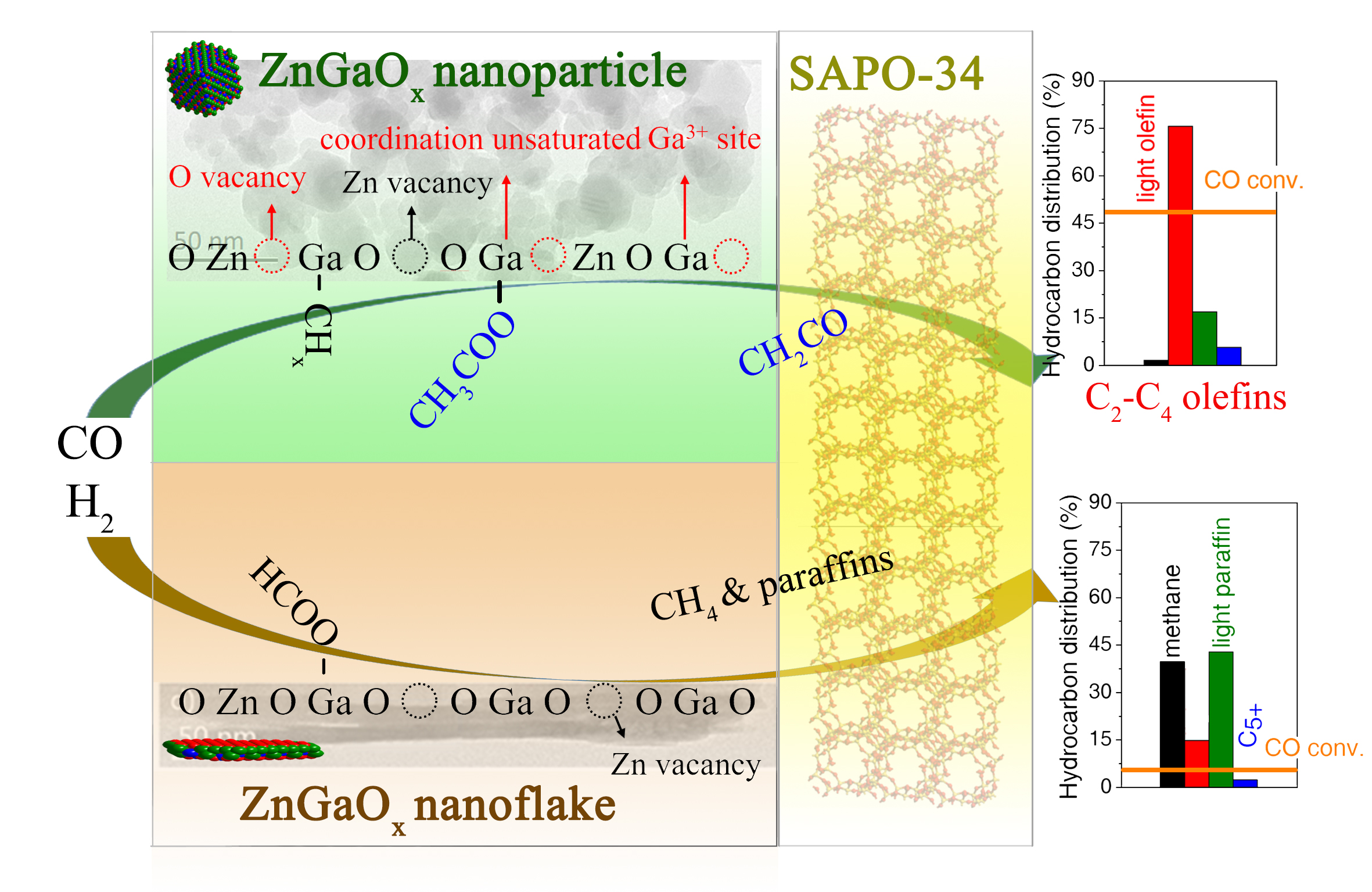Recently, a research team led by Prof. Xiulian Pan and Prof. Xinhe Bao from the Dalian Institute of Chemical Physics (DICP) of the Chinese Academy of Sciences (CAS) has made new progress in the direct syngas conversion. They demonstrated that the coordination unsaturated metal species and oxygen vacancies over ZnGaOx spinel surface play an important role in turning the activity and reaction pathway in combining with SAPO-34 zeotype.
In 2016, this team reported a new catalyst concept based on metal oxide-zeolite bifunctional catalysts (OXZEO), which enables direct conversion of syngas to light olefins with high selectivity (Science,2016). Thereafter, lots of efforts have been made in elucidating the role of metal oxide, zeolite/zeotype as well as their cooperation in determining the CO/H2 activation and selectivity controlling mechanism (Angew. Chem. Int. Ed. 2018;Angew. Chem. Int. Ed. 2019;Angew. Chem. Int. Ed. 2020; ACS Energy Letters 2022). The OXZEO concept has provided a new alternative technology platform for highly efficient utilization of coal and other carbon resources (Chem. Rev. 2021).
Despite general recognition on the importance of defect sites of metal oxides for CO/H2 activation, the actual structure and catalytic roles are far from being well understood. We demonstrate here that syngas conversion can be steered along a highly active and selective pathway towards light olefins via ketene-acetate (acetyl) intermediates by the surface with coordination unsaturated metal species, oxygen vacancies and zinc vacancies over ZnGaOx spinel−SAPO-34 composites. It gives 75.6% light-olefins selectivity and 49.5% CO conversion. By contrast, spinel−SAPO-34 containing only a small amount of oxygen vacancies and zinc vacancies gives only 14.9% light olefins selectivity at 6.6% CO conversion under the same condition. These findings reveal the importance to tailor the structure of metal oxides with coordination unsaturated metal sites/oxygen vacancies in selectivity control within the oxide-zeolite framework for syngas conversion and being anticipated also for CO2 hydrogenation.

This work was published in Nature Communications with the title “Steering the reaction pathway of syngas-to-light olefins with coordination unsaturated sites of ZnGaOx spinel”. This work was supported by the Ministry of Science and Technology of China, the Chinese Academy of Sciences, the National Natural Science Foundation of China, the Youth Innovation Promotion Association of Chinese Academy of Sciences, Dalian Science and Technology Innovation Fund, the Natural Science Foundation of Liaoning. (Text/Picture by Feng Jiao/Na Li)
Article link:https://www.nature.com/articles/s41467-022-30344-1